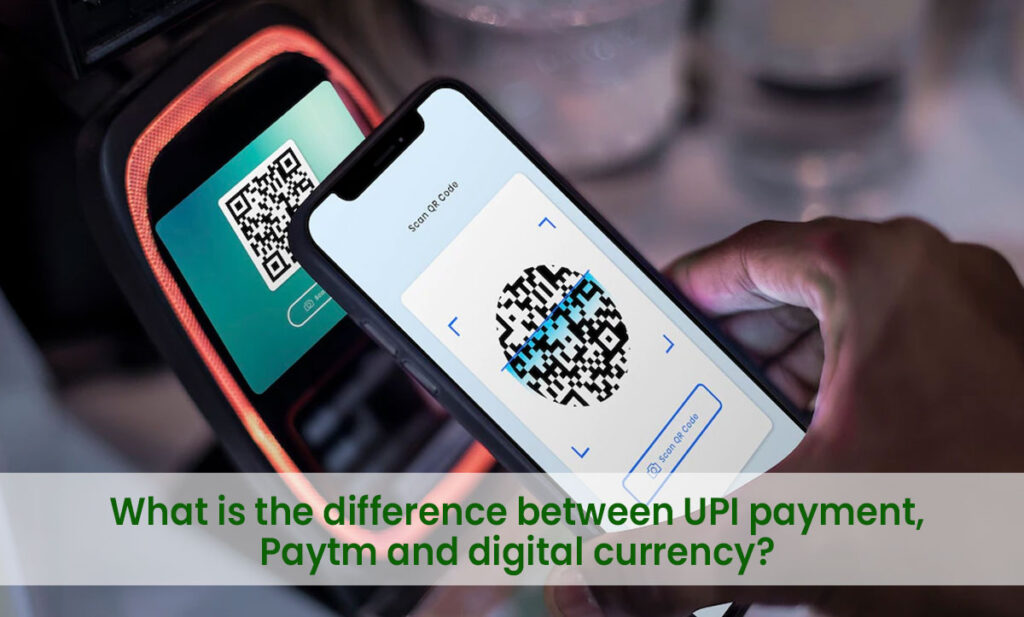
India also adopted digital currency. No longer used in a time of rapid technological progress. The introduction of digital money is scheduled for December 1. Beginning on December 1, the Reserve Bank of India (RBI) will begin testing retail digital currencies. During this time, every step of creating, using, and distributing digital currency will be carefully scrutinised.
Difference between digital currency and UPI
Currently, UPI may be used at any store to make payments using any kind of e-wallet. However, it is not really a digital currency since UPI only allows for the transfer of physical money. This indicates that the currency used for UPI payments is on par with real money. The underlying payment will be a digital rupee that may be used to make payments online rather than with actual money.
The Reserve Bank’s e-rupee will operate as a digital token. The digital form provided by the RBI is called CBDC. In actuality, a UPI payment is a direct transfer of funds between bank accounts. Digital wallets provided by banks can be used to access Reserve Bank rupees. Numerous banks that operate under the direction of the Reserve Bank manage UPI. However, the Reserve Bank will oversee and manage your digital rupee directly. Its distribution will involve the remaining banks. This implies that RBI will have control.
Who may use it?
P2P (person-to-person) and P2M (person-to-merchant) transactions using digital currency are both possible (P2M). Additionally, you can pay at a store by scanning the QR code. because the way we use our internet payments is identical to how we use money.
Read also: List of Best CBSE Schools in Kolkata 2023-2024
Major benefits of e-Rupee:
It will provide a payment option similar to a mobile wallet.
Simple conversion of digital rupees into cash and bank money.
International money transfers will become less expensive.
E-rupee will have the same purchasing power as current currencies.
Aiding in boosting the digital economy.
People are not required to keep cash about them at all times.
E-Rupee functions even when no internet is available.
Major disadvantages of e-Rupee:
The Reserve Bank’s (RBI) digital money, the e-rupee, has the drawback of virtually eliminating transactional privacy. Cash transactions are typically private, but the government will monitor digital transactions. In addition, e-Rs will not earn any interest. The RBI claims that if interest is paid on the digital rupee, the currency market may become unstable. Customers will withdraw money from their savings accounts, which will cause this. It will begin to transform it into digital money.
Aiming to bring in e-Rupee:
CBDC is a digital type of currency that is distributed by governments. In the general budget, Finance Minister Nirmala Sitharaman announced the launch of a digital rupee based on blockchain beginning in the fiscal year 2022–23. The central bank previously stated that the RBI Digital Rupee’s goal is to complement existing digital currencies and provide users with additional payment options rather than to replace them.